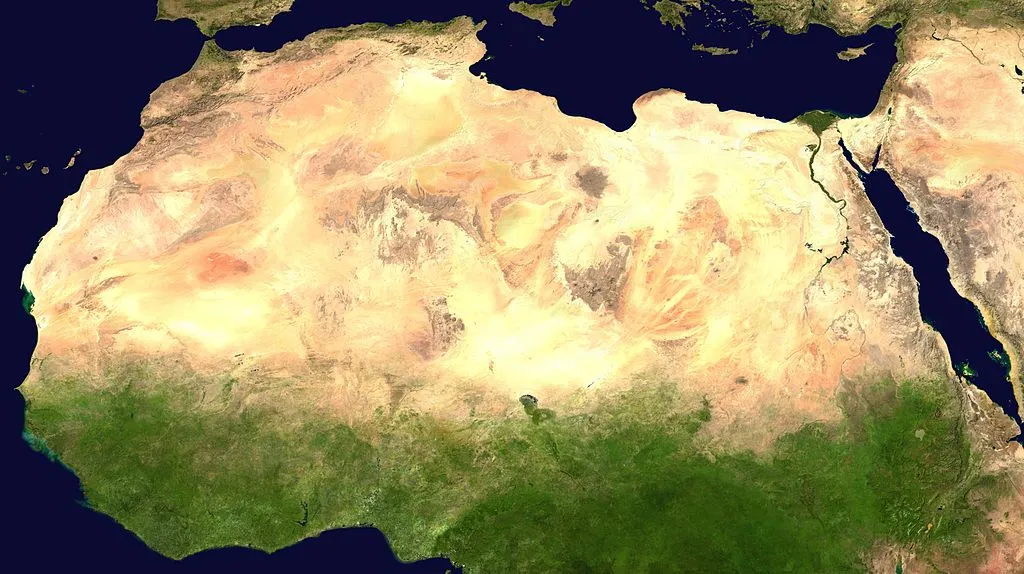The Sahara Is Millions of Years Older Than Thought
The great desert was born some 7 million years ago, as remnants of a vast sea called Tethys closed up
/https://tf-cmsv2-smithsonianmag-media.s3.amazonaws.com/filer/ee/54/ee546179-a222-470a-8f7e-147ca1adbcc6/42-56923287.jpg)
The movement of tectonic plates that created the Mediterranean Sea and the Alps also sparked the drying of the Sahara some 7 million years ago, according to the latest computer simulations of Earth’s ancient climate.
Though North Africa is currently covered by the world’s largest non-polar desert, climate conditions in the region have not been constant there for the last several million years. Subtle changes in Earth’s tilt toward the sun periodically increase the amount of solar energy received by the Northern Hemisphere in summer, altering atmospheric currents and driving monsoon rains. North Africa also sees more precipitation when less of the planet’s water is locked up in ice. Such increases in moisture limit how far the Sahara can spread and can even spark times of a “green Sahara”, when the sparse desert is replaced by abundant lakes, plants and animals.
Before the great desert was born, North Africa had a moister, semiarid climate. A few lines of evidence, including ancient dune deposits found in Chad, had hinted that the arid Sahara may have existed at least 7 million years ago. But without a mechanism to explain how it emerged, few scientists thought that the desert we see today could really be that old. Instead, most scientists argue that the Sahara took shape just 2 to 3 million years ago. Terrestrial and marine evidence suggest that North Africa underwent a period of drying at that time, when the Northern Hemisphere started its most recent cycle of glaciation.

Now Zhongshi Zhang of the Bjerknes Centre for Climate Research in Bergen, Norway, and colleagues have run simulations of climate change in North Africa over the last 30 million years. Their simulations take into account changes in Earth’s orbital position, atmospheric chemistry and the ratio of land to ocean as driven by tectonic forces. The models shows that precipitation in North Africa declined by more than half about 7 million years ago, causing the region to dry out. But this effect could not be explained by changes in vegetation, Earth’s tilt or greenhouse gas concentrations—leaving tectonic action.
About 250 million years ago, a huge body of water called the Tethys Sea separated the supercontinents of Laurasia to the north and Gondwana to the south. As those supercontinents broke apart and shuffled around, the African plate collided with the Eurasian plate, birthing the Alps and the Himalayas but closing off the bulk of the Tethys Sea. As the plates kept moving, the sea continued to shrink, eventually diminishing into the Mediterranean.
What set off the aridification in Africa was the replacement of the western arm of the Tethys Sea with the Arabian Peninsula around 7 to 11 million years ago. Replacing water with land, which reflects less sunlight, altered the region’s precipitation patterns. This created the desert and heightened its sensitivity to changes in Earth’s tilt, the researchers conclude in a study published today in Nature.
The emergence of the Sahara 7 million years ago would have affected the plants and animals in the region—and possibly the early ancestors of human beings. For instance, Sahelanthropus tchadensis, which may be the earliest member in the human family tree, lived just to the south of the Sahara (in what is now northern Chad) around the time of the transition. Overall, the team writes, the study adds to evidence that changes in precipitation “were fundamental to the evolution and dispersal of hominins in north Africa.”
Related Books

Vanished Ocean: How Tethys Reshaped the World

The Sahara: A Cultural History (Landscapes of the Imagination)
/https://tf-cmsv2-smithsonianmag-media.s3.amazonaws.com/accounts/headshot/Sarah-Zielinski-240.jpg)
/https://tf-cmsv2-smithsonianmag-media.s3.amazonaws.com/accounts/headshot/Sarah-Zielinski-240.jpg)